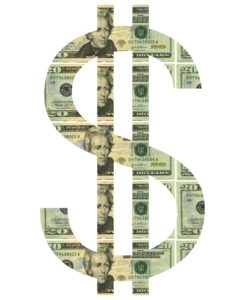Healthy Eating Doesn’t Have to Break the Bank
Sarah Heckler, MS, RD, LDN, CISSN
When I ask people what the challenges of healthy eating are, more often than not they reply it’s too expensive.
Yes this can be true, depending on how you approach grocery shopping but healthy eating doesn’t have to cost an arm and a leg. We’re here to provide you with 5 pro tips to cut the cost of healthy eating so you can eat your fruits and veggies and save money too!
Shop Seasonal & Local
The number one thing you can do to save money is to buy seasonal ingredients and shop local. Seasonal ingredients cost less because they are readily available. Find a list of local farmers’ markets here. The USDA has a great seasonal produce guide that can be found here. The NC Dept of Agriculture also has a seasonal produce guide here.
For example, butternut squash is going to cost less in the fall and winter than in spring and summer. The growing season for butternut squash is during the winter and fall months so less effort and resources are put into growing the produce and it can be sold for less.
Buying local can also help cut costs by eliminating the “middle man” (aka the grocery store).
The normal food supply chain involves the following: 1) farmers grow the food, 2) sell it to major supply chains like your neighborhood grocery store where 3) you then purchase the food. At each step of the process a profit is made via the farmers and the major supply chains, thus the price of food is increased.
The price of food also makes up for the effort and resources that we put into the production and sale of food. Oranges grown in Florida have to be transported all over the country to be sold in local grocery stores. This transportation costs money, which has to be made up somehow…in the cost of the food you purchase. There are so many other benefits to shopping local, besides decreased food cost.
Key Point: Shopping seasonal and local can help save money on your grocery bill.
Go for Coupons & Store Loyalty Programs
Checking out your store’s weekly coupons and loyalty reward programs can also help you hold on to a little more money. Store loyalty programs, like the VIC card at Harris Teeter, will reward you with lower prices and/or coupons for the items you buy at their store. These loyalty programs are similar to cash back credit cards where you get rewarded for shopping. These programs will help save you a little hear and there but this will add up over time.
Tip: Compare different brands to determine the best value. Most generic brands are cheaper and provide the same quality ingredients.
Key Point: Sign up for your store loyalty/reward programs to earn coupons.
Buy In Bulk
Buying certain items, such as grains like rice, beans, spices and other kitchen staples like flour and sugar, in bulk can help save money. These items can be bought at traditional grocery stores like, Harris Teeter and Food Lion or at wholesalers such as, Costco. Buying kitchen staples in bulk will help save money because they are cheaper in larger amounts and are naturally shelf stable so will last long enough for you to consume them. Buying perishable items in bulk, like fruits and vegetables or yogurt may actually result in spending more money, unless you have a big family you may not be able to consume it all before it spoils.
Key Point: Buying staple items, that are shelf stable, in bulk can help save money.
Frozen Produce Is Often Cheaper (and Healthier)
Buying certain produce frozen can be less expensive than buying fresh and may actually be more nutritious.
-
- The nutrient profile of fresh versus frozen fruits and vegetables is fairly similar and more often than not frozen is cheaper Additionally, fresh produce can be sitting on the shelf for awhile and loose some of it’s nutrients
- Different recipes will work better with fresh versus frozen
- Frozen produce is a great option for produce that is out of season
- When shopping choose the best option for your needs by comparing price and what the produce will be used for
- Frozen fruits are great for smoothies, produce that is out of season, mixing in yogurt to create “fruit on the bottom,” toppings for pancakes/waffles or packing in lunches ahead of time
- Frozen vegetables are great for soups, steaming, roasting and even smoothies. More recipes that use frozen vegetables can be found here.
Key Point: Frozen fruits and vegetables can help save money and work well in many recipes
Convenience Costs Money
Convenience items such as pre-cut vegetables and instant oatmeal are more expensive than if you were to start from scratch. When it comes to all snack and meals start from scratch, prepare and portion everything yourself to help save money. You can pre-portion out nuts, trail mix and popcorn. You can cut up all your vegetables for the week and package them into snack bags. For things like hummus and guacamole, by the bigger containers and pre-portion them out yourself.
Tip: If you haven’t done so already, investing in good food storage containers will make saving money that much easier.
Key Point: Convenience foods costs extra money.
Share Your Tips for Healthy Eating on a Budget
Have any money saving tips for eating healthy? Please share them! Be sure to tag us and add #FindYourEdge and #FuelingEdge to your posts.




